#nicholas and alexandra 1971
Text




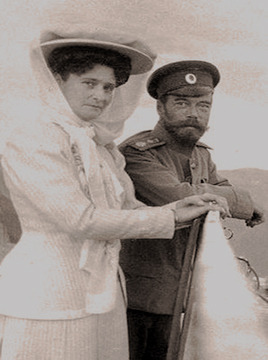

"I love you, my own darling, as few persons can only love! […] I love you too deeply and too strongly for me to show it; it is such a sacred feeling, I don’t want to let it out in words, that seem meek and poor and vain!"
Nicholas to Alix in a letter; june 1894.
#quotes#nicky and alix#tsar nicholas ii#tsarina alexandra#nicholas and alexandra 1971#the romanovs 2013#the last czars#my edits#alix of hesse#nicholas romanov#tsar#tsarina#romanovs#russian history#russian empire#my own
86 notes
·
View notes
Text
Romanov myths part one: Alexei being injured by sledding down the stairs
Although Alexei was given more freedom than is assumed by many people, and certainly had a rambunctious personality, the long-standing story of him sledding down the stairs and then crashing, causing a haemophilia attack in Tobolsk is a myth.
Both Nicholas and Alexandra do not mention this in their diaries, and surviving letters from the Grand Duchesses also do not record Alexei’s rumoured ill-fated sledding adventure. This especially is unusual, as their letters from Tobolsk included a lot of detail about them having fun sledding and on the snow mountain they constructed, so this omission is telling. Alexei did, however, have a sled and a boat which he, his friend Kolya Derevenko, and sister Olga sometimes rode down the stairs and onto the pond (which appears to be mostly small pools of water with a lot of imagination) outside (Olga apparently lost her balance and then fell out once!)

From Alexei's diary (note how he does not mention crashing or having a haemophilia attack):
Sunday 25/7 March [1918]
At eight o'clock there was a religious service, Mama and the sisters sang because the choir was busy. Kolya came at two o'clock. We played in the garden in the afternoon. We shot at a target with bows and arrows [there is a photo of this - see below]. It's very interesting. After tea, we played hide and seek. I received a sleigh and a boat as a gift from a local trader, models of the sleds and boats of the region. Kolya and I played with them a lot and we went down the stairs in the boat. He left at nine o'clock.
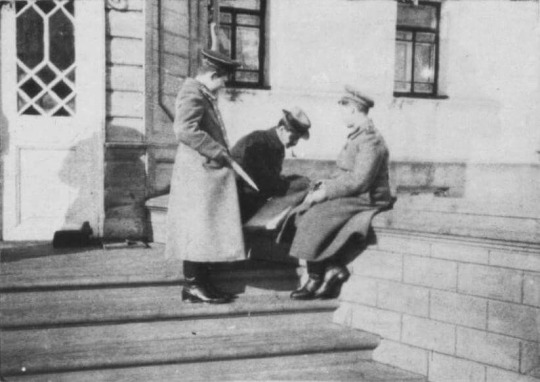

Alexei’s sister Anastasia writes about the boat and ‘pond’ here:
4/17 April 1918
Thank you very much, dear Dalechka, for the letter. It took a long time to get here – since December! But it is good it arrived. How are you? We think of you often. It is more or less quiet here. The weather has been divine, but not very warm the last few days. We continue to chop and cut up firewood, and it turns out pretty good. We fixed up our swing, and started to use it again, but probably the ropes will break soon as it has been done poorly. Our garden is a mass of water and mud. My brother has a little boat in which we, so to say, take a ride (it is a big imagination.) There is still not enough water, so we push it of the tracks with sticks and of course get completely soaked. Well, it is a little bit of fun! And how do you pass the time? Well, we are off for a walk so I must finish. I wish all of you the very best. Big greetings to all! I kiss you firmly. Greetings to your Papa and Seryozha.
Anastasia.
In reality, Alexei injured himself after contracting a bad cough. This was most likely caught off one of the visiting children to the house who kept him company, probably Kolya. The repeated coughing unfortunately triggered internal bleeding, leading to a haemophilia attack which left him unable to walk.
It was this attack that meant Alexei, Olga, Tatiana, and Anastasia were not moved to Ekaterinburg with their parents and sister Maria, as the Heir was too ill to move across the country. However, he did make some sort of recovery, at least to the point of being able to be safely transported to Ekaterinburg, and he is photographed sat upright on the Rus steamer, although looking thin. Despite this slight recovery, he was still unable to walk for the rest of his life. The night of the execution he was given a chair to sit on due to being unable to stand independently for any length of time.


A staircase at Tobolsk
So - where did this myth of Alexei sledding down the stairs causing his last haemophilia attack come from?
Robert K. Massie’s 1967 book ‘Nicholas and Alexandra’ appears to be the origin of the story in popular history. On page 490, Massie wrote:
‘[Alexei] was devising new and reckless games which no one seemed able to inhibit. One of these — riding down the inside stairs on a boat with runners which he had used on the snow mountain — led to calamity. He fell and began to bleed into the groin.’
Whilst Massie’s book is a cornerstone in Romanov historical works, it was released 56 years ago, when there was still a fair amount of mystery and rumour surrounding the Romanovs and their final months. The 1971 film, also named ‘Nicholas and Alexandra’, adapted the book into a three-hour epic film dedicated a whole scene to re-enacting this myth, giving it more publicity.
VIDEO CREDIT: Nicholas and Alexandra, Franklin J. Schaffner, 1971, Columbia-Warner Distributors, Archive.org, uploaded by Olga Movie Man on December 26, 2019, https://archive.org/details/1971nicholasandalexandra. Alexei played by Roderic Noble. They make Tobolsk look a LOT rougher and barren than it actually was!!

A floor plan of the Governor's Mansion, Tobolsk, drawn by Prince Vasily Dolgorukov. Translated in red by Helen Azar.
To summarise: although Alexei did have a boat and a sled whilst at Tobolsk and did ride them down the stairs, these games never caused a haemophilia attack and he never crashed them to the point of causing serious injury. Rather, he contracted a cough which caused internal bleeding. Robert K. Massie mistakenly put this in his book 'Nicholas and Alexandra', and the myth became more popular due to its inclusion in the 1971 film of the same name.
SOURCES:
Diary and letters quoted available here
Alexei: Russia's Last Tsesarevich - Letters, diaries and writings, by George Hawkins
Anastasia Romanov: The Tsar's Youngest Daughter Speaks Through Her Writings (1907 - 1918), by Helen Azar and George Hawkins
Nicholas and Alexandra - film, directed by Franklin J. Schaffner - free to watch here
Nicholas and Alexandra - Robert K. Massie - free to read here
Floorplan of Tobolsk - Helen Azar's website
Tour of Tobolsk in its current form as a museum - (Russian language!)
Photos: public domain, toptyumen
#Romanov#Romanov family#russian history#myths#myth busting#Alexei Nikolaevich#Alexei Romanov#Nicholas II#Tsar Nicholas#Alexandra Feodorovna#Tsarina Alexandra#OTMA#OTMAA#Nicholas and Alexandra#Nicholas and Alexandra 1971#Anastasia Nikolaevna#Anastasia Romanov#sources#dated#my own#Tobolsk#captivity#sledding#Olga Romanov#Tatiana Romanov#Maria Romanov#tsarist russia#romanov russia#romanov dynasty#romanov family
67 notes
·
View notes
Text
Oscar Nominee of All Time Tournament: Round 1, Group A
(info about nominees under the poll)
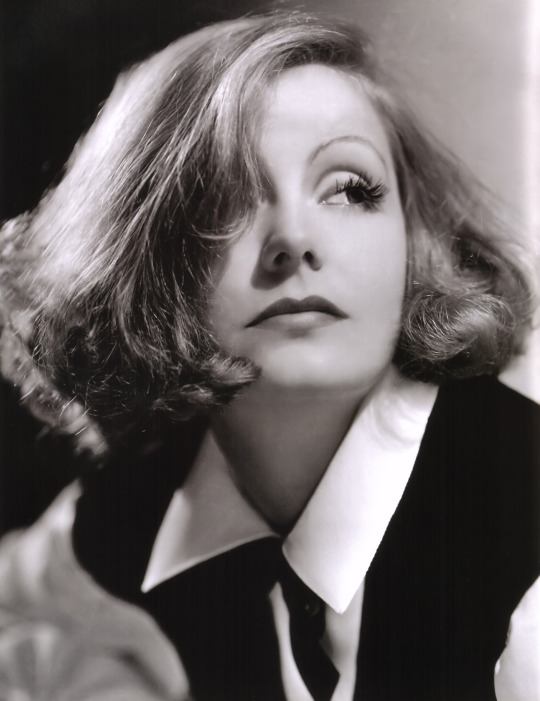

GRETA GARBO (1905-1990)
NOMINATIONS
Lead- 1929/30 for Anna Christie & Romance, 1937 for Camille, and 1939 for Ninotchka
JANET SUZMAN (1939-)
NOMINATIONS
Lead- 1971 for Nicholas and Alexandra
#actors#oscars#academy awards#film#greta garbo#janet suzman#oscar nominees#anna christie 1929#romance 1929#camille 1937#ninotchka#nicholas and alexandra 1971#nomineees group a#nominees group a polls
9 notes
·
View notes
Text

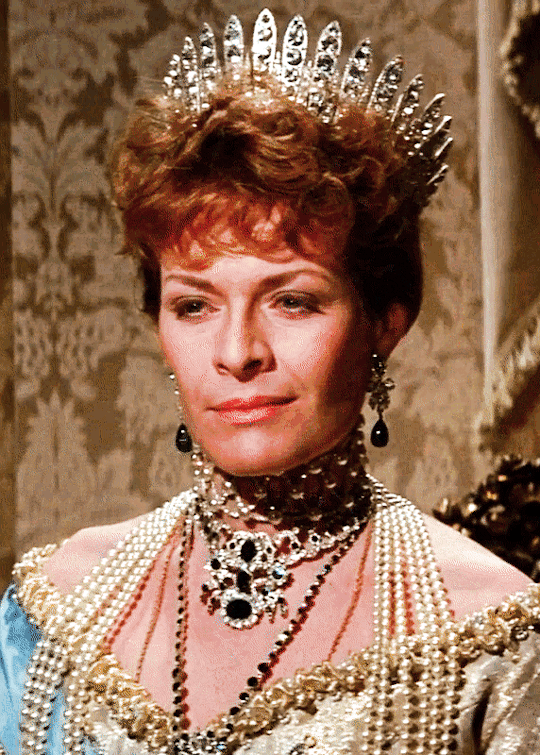

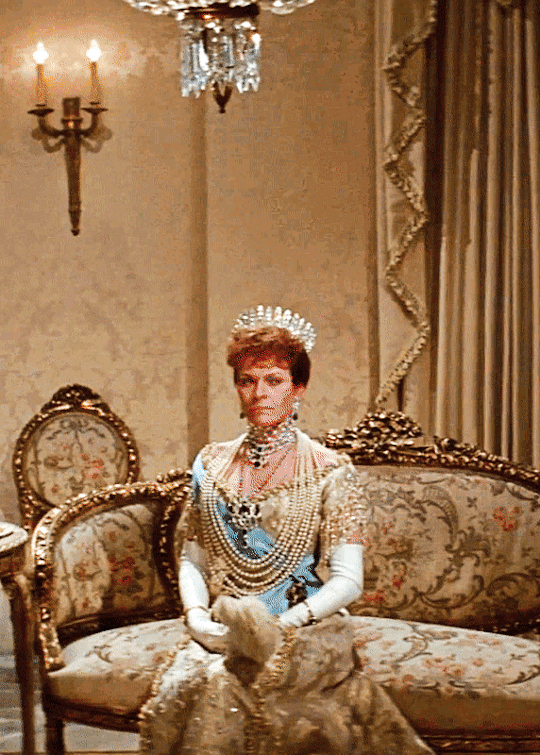
Janet Suzman as Empress Alexandra Feodorovna
Nicholas and Alexandra (1971)
#alexandra feodorovna#janet suzman#nicholas and alexandra 1971#gif#gifset#20th century#perioddramaedit
33 notes
·
View notes
Text
@professorlehnsherr-almashy @amalthea9
So @thealmightyemprex once gave to me OCs that she wasn't using anymore, but didn't want to simply throw away.
Over time, there were I created OCs who came and took space from the ones I created before.
So after this experience with my friend, I had this idea: OC exchange.
I give you an OC I don’t use anymore, of your choosing, and in return I choose an OC you for some reason doesn't use anymore or has dificulty developing.
This is the list of OCs I am giving:
Grace (Hornblower)
Nettie (Hornblower)
Maina (The Terror)
Rebecca Rosenfeld (Nicholas and Alexandra)
Olivia Timmerman (The Bofors Gun)
Lenora (Shakespeare's War of the Roses tetralogy)
#hornblower#fandom musings#oc exchange#rose tetralogy#war of the roses#nicholas and alexandra 1971#the bofors gun#the terror
8 notes
·
View notes
Text
What an interesting week. I was going through a Romanov period which proved a very short one because after watching Nicholas and Alexandra (1971) I found out that Michael Jayston had recently passed away.
I remember him from my absolute favourite BBC miniseries, Tinker Tailor Soldier Spy (1979). His Guillam left quite an impression on me and I remember thinking Benedict Cumberbatch coming short in the film version. (There are so many things I am not happy with in the film version but I don't think I should start). I know many people rave about Alec Guinness as Smiley but I have always thought Jayston's Guillam is meant to be the character the audience identifies with. Knows enough to know that something big is happening, but not enough to still be amused/annoyed at Smiley's seemingly random exploration. Jaded enough to feel put off by Tarr's general annoyingness but still cares enough to pick up on Tarr's genuine fear for his life. Excellently played by Jayston.
But then, upon further digging, I found out that he was also the Rochester in my favourite BBC adaptation of Jane Eyre in 1973. I watched it on TV so many years ago that I never knew who the actors were. Whenever I read Jane Eyre again since then his has always been the face I see for Rochester. Watching other Rochesters in the other adaptations has not dislodged that face. The 1973 version is the definitive Rochester for me. And yet, I never even suspected it's the same actor who played Guillam! I honestly cannot believe that 2 of the best TV characters I have loved for years were played by the same actor. What are the odds!
So when I came down with the flu on Monday I took the chance to spend my days off rewatching Jane Eyre (1973) and Tinker Tailor (1979). To nobody's surprise (my partner simply asked if he could put all my Romanov books back on the shelves!) I immediately got myself on a Jayston binge, devouring everything I could find online. Thanks to a small but very dedicated Jayston fan community, I discovered so many old gems but my favourite is an obscure little family drama, Flesh & Blood (1980). Only series 1 is available online and even though Jayston apparently didn't return for series 2 I still want to know what happened to the Brassingtons. I am so invested and I can't live not knowing what happened next! Oh well, for now I will just spend this unfulfilled energy screenshotting Jayston as Ross Brassington, adding to my growing Jayston folder.
RIP Michael Jayston. Thank you especially for your Peter Guillam, Mr Rochester, Tsar Nicholas II and Ross Brassington.
#michael jayston#nicholas and alexandra 1971#tinker tailor soldier spy#jane eyre 1973#flesh & blood 1980#RIP Michael Jayston#I feel like I am too late for something because he already died but I don't know late for what#those jayston fans who uploaded his works on youtube and that russian youtube thing thank you thank you thank you#I changed my avatar so it's pretty much an official transition to a new obsession
4 notes
·
View notes
Text
OTMA: Tv/Movies VS. Real Life (edit)
Nicholas and Alexandra (1971)
Anya Marson VS. Olga Nikolaevna
Lyanne Frederick VS. Tatiana Nikolaevna
Candace Glendenning VS. Maria Nikolaevna
Fiona Fullerton VS. Anastasia Nikolaevna
Made by me using iMovie
#olga nikolaevna#tatiana nikolaevna#maria nikolaevna#anastasia nikolaevna#otma#my edit#mine#otma edit#video edit#made by me#romanov#romanov edit#Nicholas and Alexandra (1971)#anya marson#Lyanne Frederick#candace glendenning#fiona Fullerton#grand duchesses#grand duchess olga nikolaevna#grand duchess tatiana nikolaevna#grand duchess maria nikolaevna#grand duchess anastasia nikolaevna
19 notes
·
View notes
Text

Inside the Mind of Coffin Joe will be released on November 28 via Arrow Video. The five-disc Blu-ray box set collects 10 films from Brazilian horror icon José Mojica Marins, better known as Coffin Joe.
It includes: 1964's At Midnight I'll Take Your Soul, 1967's This Night I'll Possess Your Corpse, 1968's The Strange World of Coffin Joe, 1970's Awakening of the Beast, 1971's The End of Man, 1972's When the Gods Fall Asleep, 1976's The Strange Hostel of Naked Pleasures, 1977's Hellish Flesh, 1978's Hallucinations of a Deranged Mind, and 2008's Embodiment of Evil.
Each disc has its own Blu-ray case with reversible artwork by Butcher Billy. They're housed together in a slipcase with a book featuring new writing by Tim Lucas, Carlos Primati, Jerome Reuter, Amy Voorhees Searles, Kyle Anderson, and Paula Sacramento, a double-sided poster, and 12 double-sided art cards.
All 10 movies have been newly stored in 4K from the best available elements with original lossless mono audio (except Embodiment of Evil, which has lossless 2.0 and 5.1 audio). Special features are listed below, where you can also see more of the packaging.

Disc 1: At Midnight I'll Take Your Soul
Audio commentary by José Mojica Marins, filmmaker Paulo Duarte, and film scholar Carlos Primati (Portuguese with English subtitles)
Video essay by Lindsay Hallam (new)
Damned: The Strange World of José Mojica Marins - 2001 documentary
Bloody Kingdom - Marins’ first short film with director’s commentary
Excerpts from early works by Marins
Trailer
Disc 2: This Night I'll Possess Your Corpse / The Strange World of Coffin Joe
This Night I'll Possess Your Corpse audio commentary by José Mojica Marins, filmmaker Paulo Duarte, and film scholar Carlos Primati (Portuguese with English subtitles)
The Strange World of Coffin Joe audio commentary by José Mojica Marins, filmmaker Paulo Duarte, and film scholar Carlos Primati (Portuguese with English subtitles)
Interview with film historian Stephen Thrower (new)
Video essay by Miranda Corcoran looking Coffin Joe as horror host (new)
The Strange World of Coffin Joe alternate ending with commentary by Marins
Trailers
Disc 3: Awakening of the Beast / The End of Man
Awakening of the Beast audio commentary by José Mojica Marins, filmmaker Paulo Duarte, and film scholar Carlos Primati (Portuguese with English subtitles)
The End of Man audio commentary by José Mojica Marins, filmmaker Paulo Duarte, and film scholar Carlos Primati (Portuguese with English subtitles)
Interview with Guy Adams on Marins’ esoteric aspects (new)
Video essay by Alexandra Heller-Nicholas on the gender politics of Marins’ films (new)
The Awakening of the Beast alternate opening titles
Trailers
When the Gods Fall Asleep / The Strange Hostel of Naked Pleasures
Interview with Virginie Sélavy on surrealism in Marins’ work (new)
Interview with Jack Sargeant (new)
Interview with Embodiment of Evil co-writer Dennison Ramalho (new)
Footage of Marins at the 2001 Sundance Film Festival
A Blind Date for Coffin Joe short film
Trailer
Disc 5: Hellish Flesh / Hallucinations of a Deranged Mind
Hallucinations of a Deranged Mind commentary by José Mojica Marins, editor Nilcemar Leyart, Paulo Duarte, and Carlos Primati (Portuguese with English subtitles)
Interview with Andrew Leavold on Marins’ place in '60s & '70s Marginal Cinema (new)
Video essay by Kat Ellinger (new)
Trailers
Disc 6: Embodiment of Evil
Audio commentary by producer Paulo Sacramento and co-writer Dennison Ramalho (Portuguese with English subtitles)
Interview with Dennison Ramalho (new)
Interview in which Ramalho pays tribute to Marins
Footage of Marins at the film’s premiere
Making Of featurette
Experimental Making Of featurettes
Multiple featurettes with commentary by Marins
Trailer
Additional contents:
Collector’s book with new writing by Tim Lucas, Carlos Primati, Jerome Reuter, Amy Voorhees Searles, Kyle Anderson, and Paula Sacramento
Double-sided poster with artwork by Butcher Billy
12 double-sided art cards
Cultural icon, anti-establishment statement, sadistic lord of carnival horror! With his long fingernails, top hat and cape, Coffin Joe was the creation of Brazilian filmmaker José Mojica Marins, who wrote, directed and starred in a series of outrageous movies from 1964 to 2008.
Pre-order Inside the Mind of Coffin Joe.
#coffin joe#horror#foreign horror#brazilian film#brazilian horror#arrow video#dvd#gift#butcher billy#jose mojica marins#60s horror#1960s horror#70s horror#1970s horror#horror movies
165 notes
·
View notes
Text



LYNNE FREDERICK playing dress-up as Grand Duchess Tatiana on the set of NICHOLAS AND ALEXANDRA (1971)
#tatiana approves!#lynne frederick#nicholas and alexandra#perioddramaedit#perioddramasource#romanovedit#otma
105 notes
·
View notes
Text
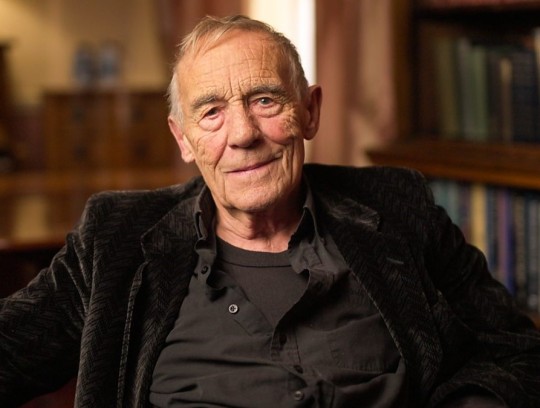
The actor Michael Jayston, who has died aged 88, was a distinguished performer on stage and screen. The roles that made his name were as the doomed Tsar Nicholas II of Russia in Franklin Schaffner’s sumptuous account of the last days of the Romanovs in Nicholas and Alexandra (1971), and as Alec Guinness’s intelligence minder in John Le Carré’s Tinker Tailor Soldier Spy on television in 1979. He never made a song and dance about himself and perhaps as a consequence was not launched in Hollywood, as were many of his contemporaries.
Before these two parts, he had already played a key role in The Power Game on television and Henry Ireton, Cromwell’s son-in-law, in Ken Hughes’s fine Cromwell (1969), with Richard Harris in the title role and Guinness as King Charles I. And this followed five years with the Royal Shakespeare Company including a trip to Broadway in Harold Pinter’s The Homecoming, in which he replaced Michael Bryant as Teddy, the brother who returns to the US and leaves his wife in London to “take care of” his father and siblings.
Jayston, who was not flamboyantly good-looking but clearly and solidly attractive, with a steely, no-nonsense, demeanour and a steady, piercing gaze, could “do” the Pinter menace as well as anyone, and that cast – who also made the 1973 movie directed by Peter Hall – included Pinter’s then wife, Vivien Merchant, as well as Paul Rogers and Ian Holm.
Jayston had found a replacement family in the theatre. Born Michael James in Nottingham, he was the only child of Myfanwy (nee Llewelyn) and Vincent; his father died of pneumonia, following a serious accident on the rugby field, when Michael was one, and his mother died when he was a barely a teenager. He was then brought up by his grandmother and an uncle, and found himself involved in amateur theatre while doing national service in the army; he directed a production of The Happiest Days of Your Life.
He continued in amateur theatre while working for two years as a trainee accountant for the National Coal Board and in Nottingham fish market, before winning a scholarship, aged 23, to the Guildhall School of Music and Drama in London, where he was five years older than everyone else on his course. He played in rep in Bangor, Northern Ireland, and at the Salisbury Playhouse before joining the Bristol Old Vic for two seasons in 1963.
At the RSC from 1965, he enjoyed good roles – Oswald in Ghosts, Bertram in All’s Well That Ends Well, Laertes to David Warner’s Hamlet – and was Demetrius in Hall’s film of A Midsummer Night’s Dream (1968), with Warner as Lysander in a romantic foursome with Diana Rigg and Helen Mirren.
But his RSC associate status did not translate itself into the stardom of, say, Alan Howard, Warner, Judi Dench, Ian Richardson and others at the time. He was never fazed or underrated in this company, but his career proceeded in a somewhat nebulous fashion, and Nicholas and Alexandra, for all its success and ballyhoo, did not bring him offers from the US.
Instead, he played Charles Lutwidge Dodgson (Lewis Carroll) in Alice’s Adventures in Wonderland (1972), a so-so British musical film version with music and lyrics by John Barry and Don Black, with Michael Crawford as the White Rabbit and Peter Sellers the March Hare. In 1979 he was a colonel in Zulu Dawn, a historically explanatory prequel to the earlier smash hit Zulu.
As an actor he seemed not to be a glory-hunter. Instead, in the 1980s, he turned in stylish and well-received leading performances in Noël Coward’s Private Lives, at the Duchess, opposite Maria Aitken (1980); as Captain von Trapp in the first major London revival of The Sound of Music at the Apollo Victoria in 1981, opposite Petula Clark; and, best of all, as Mirabell, often a thankless role, in William Gaskill’s superb 1984 revival, at Chichester and the Haymarket, of The Way of the World, by William Congreve, opposite Maggie Smith as Millamant.
Nor was he averse to taking over the leading roles in plays such as Peter Shaffer’s Equus (1973) or Brian Friel’s Dancing at Lughnasa (1992), roles first occupied in London by Alec McCowen. He rejoined the National Theatre – he had been Gratiano with Laurence Olivier and Joan Plowright in The Merchant of Venice directed by Jonathan Miller in 1974 – to play a delightful Home Counties Ratty in the return of Alan Bennett’s blissful, Edwardian The Wind in the Willows in 1994.
On television, he was a favourite side-kick of David Jason in 13 episodes of David Nobbs’s A Bit of a Do (1989) – as the solicitor Neville Badger in a series of social functions and parties across West Yorkshire – and in four episodes of The Darling Buds of May (1992) as Ernest Bristow, the brewery owner. He appeared again with Jason in a 1996 episode of Only Fools and Horses.
He figured for the first time on fan sites when he appeared in the 1986 Doctor Who season The Trial of a Time Lord as Valeyard, the prosecuting counsel. In the new millennium he passed through both EastEnders and Coronation Street before bolstering the most lurid storyline of all in Emmerdale (2007-08): he was Donald de Souza, an unpleasant old cove who fell out with his family and invited his disaffected wife to push him off a cliff on the moors in his wheelchair, but died later of a heart attack.
By now living on the south coast, Jayston gravitated easily towards Chichester as a crusty old colonel – married to Wendy Craig – in Coward’s engaging early play Easy Virtue, in 1999, and, three years later, in 2002, as a hectored husband, called Hector, to Patricia Routledge’s dotty duchess in Timberlake Wertenbaker’s translation of Jean Anouilh’s Léocadia under the title Wild Orchids.
And then, in 2007, he exuded a tough spirituality as a confessor to David Suchet’s pragmatic pope-maker in The Last Confession, an old-fashioned but gripping Vatican thriller of financial and political finagling told in flashback. Roger Crane’s play transferred from Chichester to the Haymarket and toured abroad with a fine panoply of senior British actors, Jayston included.
After another collaboration with Jason, and Warner, in the television movie Albert’s Memorial (2009), a touching tale of old war-time buddies making sure one of them is buried on the German soil where first they met, and a theatre tour in Ronald Harwood’s musicians-in-retirement Quartet in 2010 with Susannah York, Gwen Taylor and Timothy West, he made occasional television appearances in Midsomer Murders, Doctors and Casualty. Last year he provided an introduction to a re-run of Tinker Tailor on BBC Four. He seemed always to be busy, available for all seasons.
As a keen cricketer (he also played darts and chess), Jayston was a member of the MCC and the Lord’s Taverners. After moving to Brighton, he became a member of Sussex county cricket club and played for Rottingdean, where he was also president.
His first two marriages – to the actor Lynn Farleigh in 1965 and the glass engraver Heather Sneddon in 1970 – ended in divorce. From his second marriage he had two sons, Tom and Ben, and a daughter, Li-an. In 1979 he married Ann Smithson, a nurse, and they had a son, Richard, and daughter, Katie.
🔔 Michael Jayston (Michael James), actor, born 29 October 1935; died 5 February 2024
Daily inspiration. Discover more photos at Just for Books…?
12 notes
·
View notes
Text
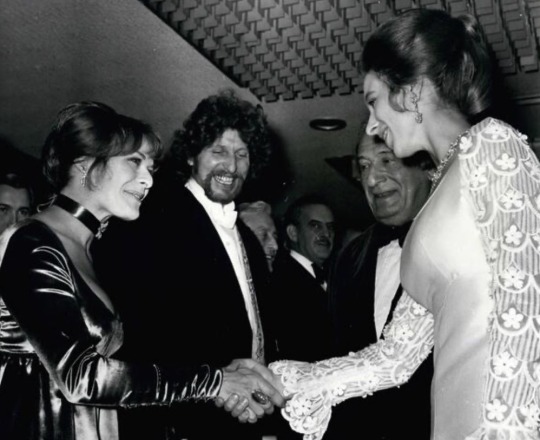
Princess Anne meeting Academy Award nominee Janet Suzman at the royal premiere of Nicholas and Alexandra in 1971
39 notes
·
View notes
Text
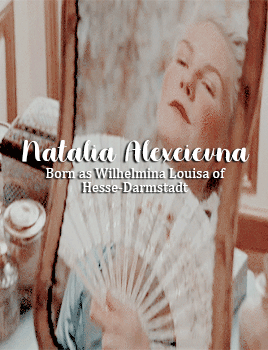

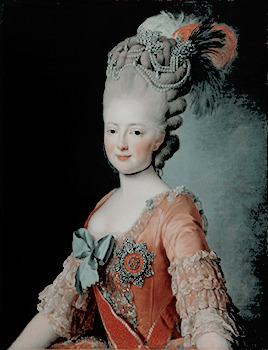








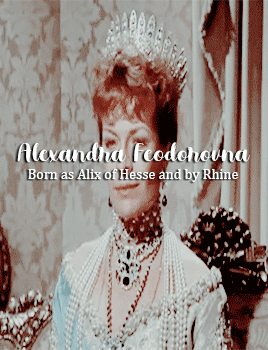
"Catherine II played a decisive role in the choice of future tsarinas, introducing compatriot women in the court. And so, with one exception (Alexander III's wife, who would be Danish), they would all be of German origin. The princesses were selected very young, between fourteen and sixteen years old, still shy and malleable. The ceromonies obeyed a very strict etiquette, starting with the solemn entrance of the future Grand Duchess, until her wedding. The court carriages were waiting for the young lady at the station. On the way to the Winter Palace, where the great dignitaries would be presented to her, she could admire the living barrier of the imperial Guard outlined to her passage. On horseback, the emperor escorted the golden carriage with the imperial crown on top, pulled by eight gray horses. The Grand Dukes followed on horseback, and the Grand Duchesses, in other luxurious carriages. The next stage was a kind of guided tour by the imperial palaces of St. Petersburg and the surrounding area, which was an opportunity for the young foreigner to learn the history of the country. Another important stage of this training consisted of inculcating the culture of the country of adoption, to allow a complete integration. (something Catherine II had achieved to perfection). The future Grand Duchesses were to learn Russian and convert to Orthodoxy. It didn't take long for them to lose all contact with their home country. Thus, stripped of their Germanness, they could become authentic Slavs. The wedding ceremonial remained unchanged until the reign of Nicholas II. After the festivities ended, the young wife found herself closed in the rigid world of the Russian monarchy. They had to give up their personal tastes and erase their personality. Becoming another guardian of secular traditions, she was to become an idol of the nation."
The Tsarinas - The Women who Made Russia | Vladimir Fedorovski.
(Loose translation)
#Tsarina alexandra#tsarina maria alexandrovna#empress alexandra#Natalia alexeievna#Tsarina maria feodorovna#facts#my own#my editis#nicholas and alexandra 1971#lyubov imperatora 2002#charlotte of prussia#Empress elizaveta alexeievna#elizabeth alexeievna#my edits#movie gif#romanovs#history#russian history#the romanovs#house of romanovs#tsarina
167 notes
·
View notes
Text
"I don't have any time or real interest to get into a new TV show or anything" puts on the three hour 1971 mediocrely reviewed film Nicholas and Alexandra because it was on my YouTube homepage at 8 am
6 notes
·
View notes
Note
hi! So I was just rewatching the movie Romanovs an Imperial Family and I noticed that at Tobolsk they (the guards) took pictures of the family (front and side profiles) and I was also just watching Nicholas and Alexandra (1971) and I noticed that they also took pictures at Tobolsk. Did this happen in real life or is it just a myth? (If it’s a myth you can put it on the list for your series :)
Thank you!
Hi! Thank you so much for your question lovely! It made me dig a lot deeper into whether this was actually true and I am pleased to say that it isn't a myth, but something that actually happened. Here are some details!
Pierre Gilliard's diary mentions the family having to have identification photos taken. On 17 September 1917 he wrote that "ID cards with numbers, equipped with photographs" were taken of the family. According to Paul Gilbert, who runs the Nicholas II website and has a great article about this, Alix also wrote about this in her diary.
Pierre Gilliard also wrote about this in his memoir Thirteen Years at the Russian Court, Page 286:
In September Commissary Pankratof arrived at Tobolsk, having been sent by Kerensky. He was accompanied by his deputy, Nikolsky—like himself, an old political exile. Pankratof was quite a well-informed man, of gentle character, the typical enlightened fanatic. He made a good impression on the Czar and subsequently became attached to the children. But Nikolsky was a low type, whose conduct was most brutal. Narrow and stubborn, he applied his whole mind to the daily invention of fresh annoyances. Immediately after his arrival he demanded of Colonel Kobylinsky that we should be forced to have our photographs taken. When the latter objected that this was superfluous, since all the soldiers knew us—they were the same as had guarded us at Tsarskoie-Selo—he replied: " It was forced on us in the old days, now it's their turn." It had to be done, and henceforward we had to carry our identity cards with a photograph and identity number."
It's worth mentioning that all the staff that worked at the palace before the Revolution did indeed have to carry ID passes with photographs.
We have a brilliant example of what one of these passes in Tobolsk might have looked like in the form of passes for Botkin and Demidova, which are now Museum of the Family of Emperor Nicholas II in Tobolsk. I sadly couldn't find Demidova's, so have just attached Botkin's.

Captioned: 'Identity card (pass) E. S. Botkin for the right to enter the house number 1 (“Freedom House”) dated November 6, 1917.'
Which brings me on to a lady named Maria Mikhailovna Ussakovskaya. For clarification, I don't know if she was the person who took the photos for definite, but she was a prominent photographer in the area and could have been hired to take the photos. She did 100% have some connection to the Romanov family, as I'll explain later.
Maria was a photographer in Tobolsk, in fact she was the first woman photographer from the region that operated professionally, and she had her own salon. She even photographed Rasputin - you can see her surname embossed on the cabinet card here, reading Уссаковская

She photographed the family's entourage, too, as the staff were able to move freely about Tobolsk. Shown here are (left-right): Catherine 'Trina' Schneider, Count Ilya Tatishchev, Pierre Gilliard, Countess Anastasia 'Nastenka' Hendrikova, and Prince Vasily Dolgorukov. Note Maria's surname embossed again onto the card, showing it was taken and produced at her salon.

Invoices for the family show that the Romanovs had several payments sent to Ussakovskaya for postcards and "correcting negatives", so we know that there definitely was a relationship between the two parties. She took photos of the exterior of the house in Tobolsk, and postcards were sent by the Grand Duchesses showing the house, so they might have used her photos.

Letter sent from Maria to Nikolai Demenkov, her 'crush'
Which then begs the question of what happened to these ID photos...
Apparently, Maria Ussakovskaya's daughter Nina owned some photographic plates of the Romanov family. It's not explained whether these were casual photos taken of the family, or ID photos, but according to Paul Gilbert "in 1938... fearing arrest, [Nina] destroyed all the photographic plates".
Owning any Romanov or Tsarist related items, including photographs and postcards, was an arrestable offence. The rise of the gulags in the 1930s with the Stalinist regime probably prompted Nina to destroy what she owned.
Personally, I don't have much hope that any of the photos of the family will ever turn up. But there is always a small chance, I suppose :)
To conclude: yes, this happened, photos were definitely taken of the family for identification passes. Pierre Gilliard is a trustworthy source and the fact that it was written in his diary and also Alix's diary is pretty much concrete evidence. The existence of Maria Ussakovskaya and her association with the family also points towards this, alongside the bills and invoices sent to the family at Freedom House.
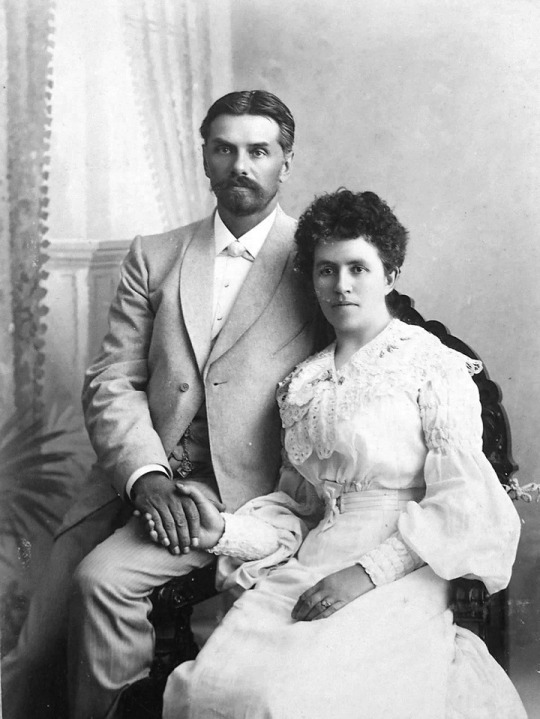
Maria with her husband, Ivan.
SOURCES:
The woman who photographed the Imperial Family in Tobolsk by Paul Gilbert
Thirteen Years at the Russian Court by Pierre Gilliard
#q#ask#answered#OTMA#Romanovs#Romanov family#Tobolsk#Freedom House#Exile#Captivity#Eugene Botkin#Evgeny Botkin#Anna Demidova#Pierre Gilliard#Alexandra Feodorovna#Maria Nikolaevna#sources#Thirteen Years at the Russian Court#my own
18 notes
·
View notes
Text


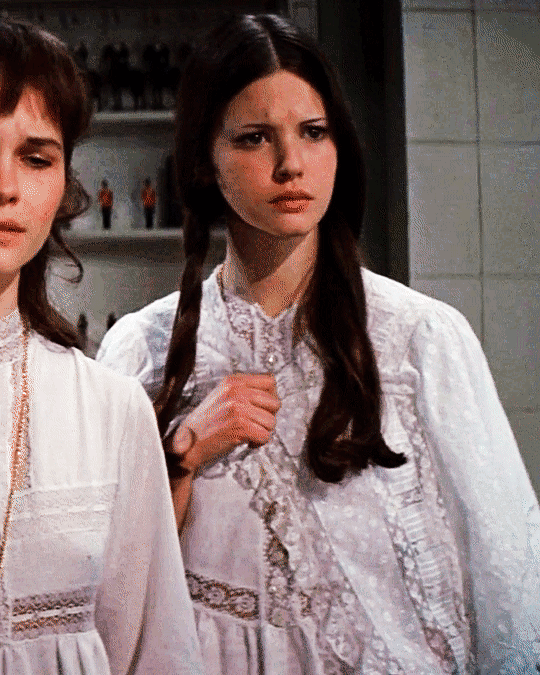



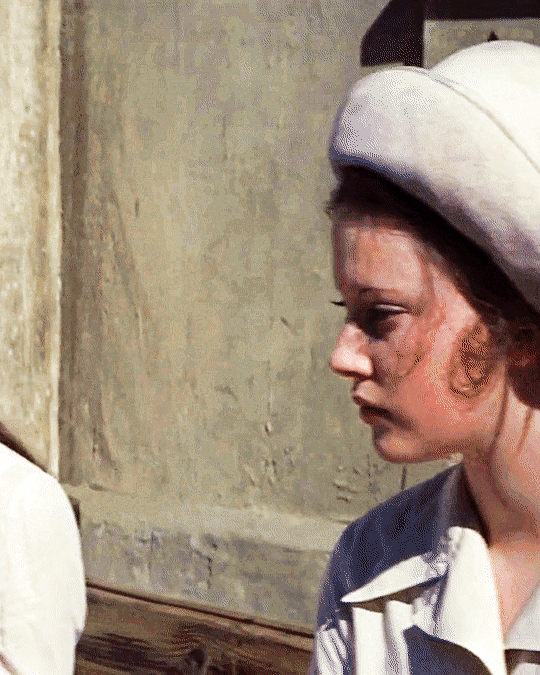

Lynne Frederick as Grand Duchess Tatiana Nikolaevna of Russia
Nicholas and Alexandra (1971)
#tatiana nikolaevna#lynne frederick#the romanovs#gif#gifset#perioddramaedit#20th century#nicholas and alexandra
193 notes
·
View notes
Text
Better known among Doctor Who fans as the Valeyard

2 notes
·
View notes